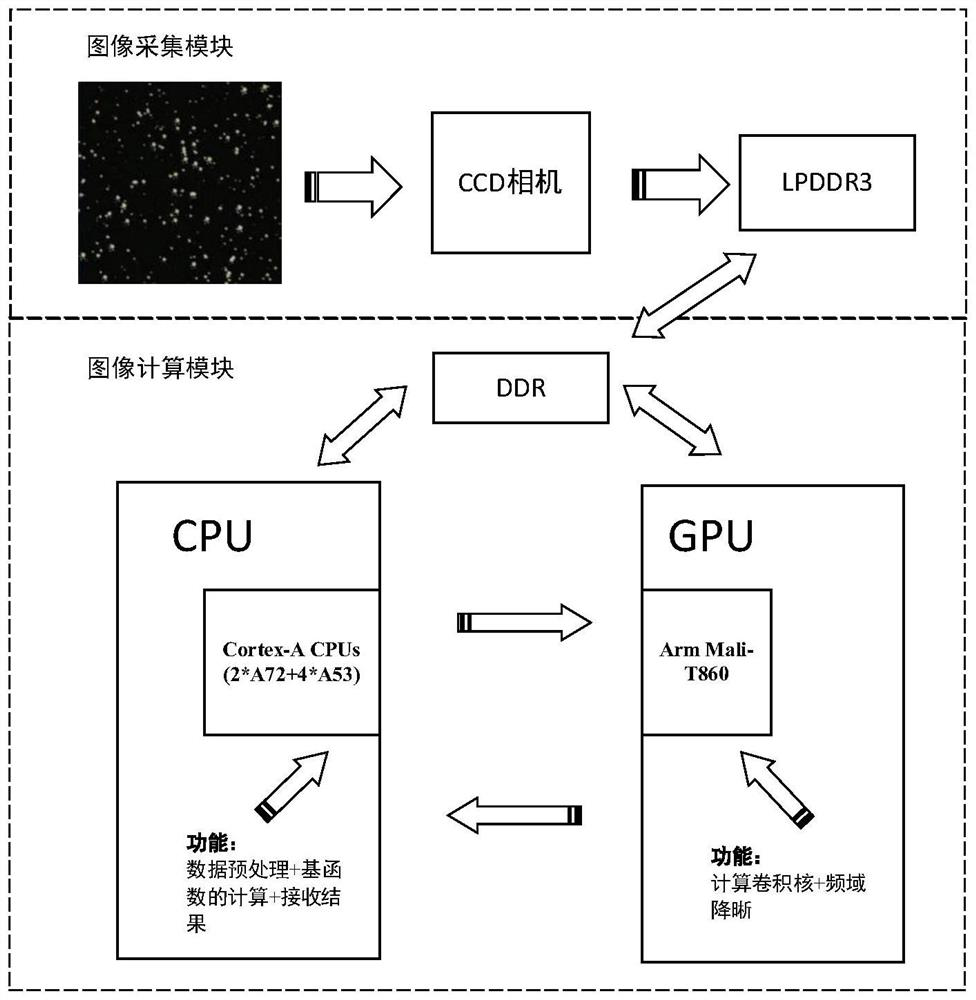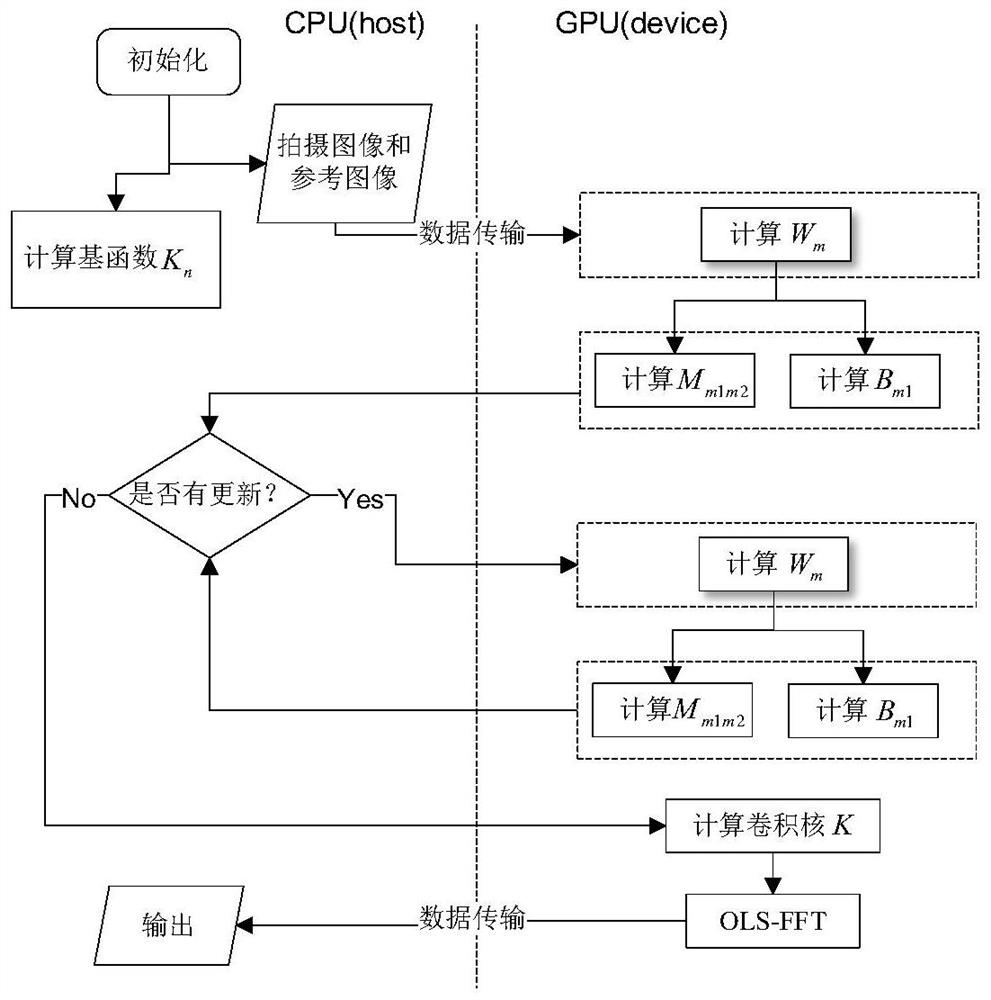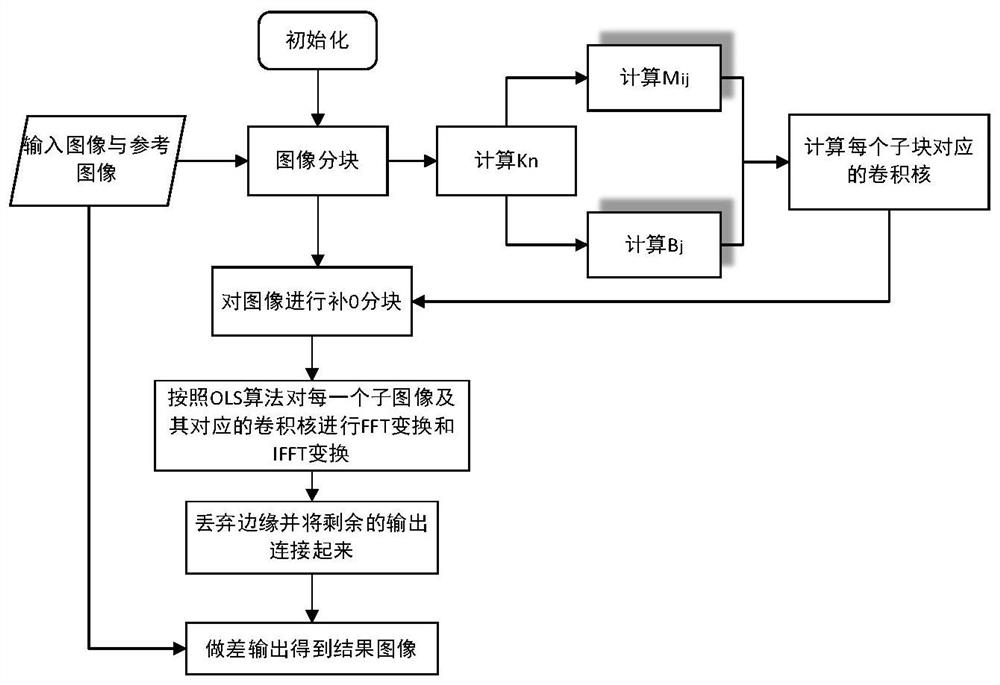Frequency domain astronomical image target detection method and system
A technology for astronomical images and target detection, applied in the field of target detection, to reduce computational complexity, solve spectrum aliasing, and ensure accuracy
- Summary
- Abstract
- Description
- Claims
- Application Information
AI Technical Summary
Problems solved by technology
Method used
Image
Examples
Embodiment 1
[0066] Embodiment 1 of the present invention proposes a frequency-domain astronomical image target detection method, comprising the following steps:
[0067] Based on the pre-obtained reference image, the original astronomical image collected is preprocessed by the CPU; the reference image and the preprocessed astronomical image are divided into image blocks by the method of overlapping and saving, and reference images with the same size and number are obtained Sub-images and astronomical image sub-images; Gaussian function and polynomial multiplication are used to obtain n sets of basis vectors of the convolution kernel and input to GPU;
[0068] According to the reference sub-image and astronomical sub-image, the GPU fits it with n sets of basis vectors to obtain the convolution kernel corresponding to each reference sub-image, and uses the convolution kernel to perform frequency-domain filtering and dedefinition processing on each reference sub-image to obtain template imag...
Embodiment 2
[0119] Embodiment 2 of the present invention proposes a frequency-domain astronomical image target detection system, the system includes: a preprocessing module deployed on the CPU, a basis function calculation module and a target detection module, and a convolution kernel calculation module deployed on the GPU and frequency domain filtering module, wherein,
[0120] The preprocessing module is used to preprocess the original astronomical image collected based on the pre-obtained reference image; it is also used to perform image segmentation on the reference image and the preprocessed astronomical image by overlapping and saving the method to obtain Reference image sub-images and astronomical image sub-images with the same size and number;
[0121] The basis function calculation module is used to multiply the Gaussian basis function and the polynomial to obtain n groups of basis vectors of the convolution kernel and input the convolution kernel calculation module;
[0122] Th...
PUM
 Login to View More
Login to View More Abstract
Description
Claims
Application Information
 Login to View More
Login to View More - R&D
- Intellectual Property
- Life Sciences
- Materials
- Tech Scout
- Unparalleled Data Quality
- Higher Quality Content
- 60% Fewer Hallucinations
Browse by: Latest US Patents, China's latest patents, Technical Efficacy Thesaurus, Application Domain, Technology Topic, Popular Technical Reports.
© 2025 PatSnap. All rights reserved.Legal|Privacy policy|Modern Slavery Act Transparency Statement|Sitemap|About US| Contact US: help@patsnap.com



